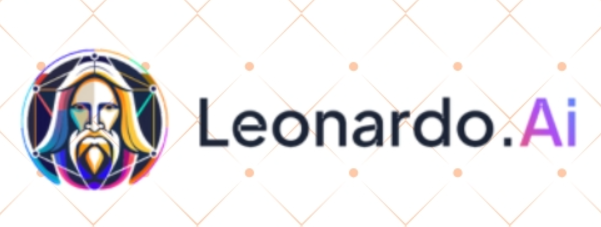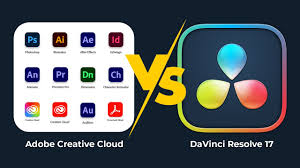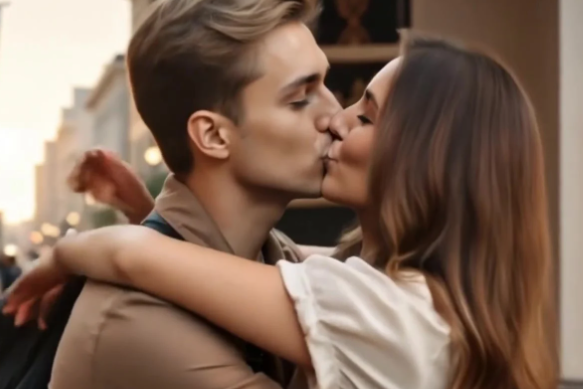Creating stunning animated images with Leonardo AI has become incredibly accessible, transforming static artwork into captivating moving visuals that grab attention across social media platforms. Whether you're a content creator, digital artist, or marketing professional, learning how to animate an image in Leonardo AI opens up endless possibilities for engaging visual content. This comprehensive guide walks you through every step of the animation process, from uploading your static images to fine-tuning motion parameters for professional-quality results that will elevate your creative projects.
Understanding Leonardo AI Animation Features
Leonardo AI animation capabilities have revolutionised how creators approach motion graphics and animated content. The platform's AI-powered animation engine analyses your static images and intelligently applies motion effects that feel natural and visually appealing. Unlike traditional animation software that requires extensive technical knowledge, Leonardo AI simplifies the process whilst maintaining professional-quality output standards.
The animation system works by identifying key elements within your image and applying physics-based motion patterns. This includes subtle movements like flowing hair, rippling water, swaying trees, or more dramatic effects like particle systems and atmospheric changes. The AI understands depth, lighting, and compositional elements to create believable motion that enhances rather than distracts from your original artwork.
Step-by-Step Animation Process
Preparing Your Image for Animation
Before diving into the Leonardo AI animation process, proper image preparation significantly impacts your final results. Start by ensuring your image meets the platform's recommended specifications: high resolution (preferably 1024x1024 pixels or higher), clear subject definition, and good contrast between foreground and background elements.
Consider the composition carefully - images with distinct layers and clear subject separation animate more effectively. Portraits with flowing elements like hair or clothing, landscapes with natural movement opportunities, or architectural shots with atmospheric potential work particularly well. Avoid overly cluttered compositions where motion might appear chaotic or distracting.
Accessing Animation Tools
Navigate to the Leonardo AI platform and locate the animation section within your workspace. The interface presents several animation options, each designed for different types of motion effects. Upload your prepared image using the drag-and-drop functionality or browse from your device storage. The platform automatically processes your image and prepares it for animation parameter adjustment.
Once uploaded, the system analyses your image structure and suggests optimal animation settings based on the detected elements. This intelligent preprocessing saves considerable time whilst providing a solid foundation for customisation according to your creative vision.
Configuring Animation Parameters
The animation parameter settings in Leonardo AI offer granular control over motion characteristics. Motion strength determines the intensity of movement - lower values create subtle, elegant animations whilst higher values produce more dramatic effects. Direction controls specify movement patterns: horizontal, vertical, circular, or custom directional flows.
Duration settings affect the animation loop length, with shorter durations creating quick, energetic movements and longer durations producing smooth, contemplative motion. The stability parameter balances motion fluidity with image coherence, preventing excessive distortion whilst maintaining engaging movement patterns.
Fine-Tuning Motion Effects
Advanced motion customisation allows precise control over specific image regions. Use the masking tools to define areas where motion should be enhanced or restricted. For portrait animations, you might want to emphasise hair movement whilst keeping facial features stable. Landscape animations might focus on sky elements, water surfaces, or vegetation whilst maintaining architectural stability.
The preview function enables real-time adjustment testing without committing to full rendering. This iterative approach helps achieve the perfect balance between natural motion and artistic impact, ensuring your animated image meets professional standards.
Rendering and Export Options
Final rendering in Leonardo AI processes your configured animation settings into various output formats. Choose between MP4 for social media compatibility, GIF for web integration, or higher-quality formats for professional presentations. Resolution options accommodate different use cases, from mobile-optimised content to high-definition displays.
The rendering queue system manages multiple animations simultaneously, allowing efficient batch processing for content creators working with multiple images. Processing times vary based on complexity and resolution, typically ranging from minutes for simple animations to longer periods for complex, high-resolution projects.
Advanced Animation Techniques
Layered Animation Approaches
Advanced Leonardo AI techniques involve creating layered animations where different image elements move independently. This approach produces more sophisticated results by treating foreground, midground, and background elements as separate animation layers. Portrait subjects might have subtle facial micro-expressions whilst hair and clothing respond to simulated wind effects.
Atmospheric layering adds depth through particle effects, lighting changes, or weather simulations. These subtle enhancements create immersive experiences that draw viewers into the animated scene, transforming static portraits into living, breathing artworks.
Combining Multiple Animation Styles
Experienced users often combine different animation approaches within single projects. Subtle character animations paired with dynamic background effects create compelling contrasts that maintain viewer attention. Environmental animations like flowing water or moving clouds complement portrait subjects without overwhelming the primary focus.
This multi-layered approach requires careful parameter balancing to ensure all motion elements work harmoniously together. The key lies in creating visual hierarchy where primary animations lead the eye whilst secondary movements provide supporting atmosphere.
Common Challenges and Solutions
Troubleshooting Animation Issues
When Leonardo AI animations don't meet expectations, several common issues typically cause problems. Excessive motion blur often results from overly aggressive motion parameters - reducing motion strength and adjusting stability settings usually resolves this issue. Unnatural movement patterns might indicate poor image preparation or inappropriate parameter selection for the specific image type.
Processing failures commonly occur with images that don't meet platform specifications or contain elements that confuse the AI analysis system. Simplifying compositions, improving image quality, or adjusting resolution often resolves these technical difficulties.
Optimising Performance and Quality
Achieving optimal animation quality requires balancing multiple factors including processing time, file size, and visual impact. Start with conservative settings and gradually increase complexity as you become familiar with how different parameters affect your specific image types. This methodical approach prevents wasted processing time on unsuitable settings.
Regular experimentation with different parameter combinations builds intuitive understanding of how Leonardo AI responds to various image characteristics and motion requirements.
Frequently Asked Questions
What image formats work best for Leonardo AI animation?
Leonardo AI supports most common image formats including JPEG, PNG, and WEBP. PNG files with transparency work particularly well for layered animations, whilst high-quality JPEG images provide excellent results for most standard animation projects.
How long does the animation process typically take?
Processing times for Leonardo AI animations vary significantly based on image complexity, resolution, and selected parameters. Simple animations might complete within 2-5 minutes, whilst complex, high-resolution projects could require 15-30 minutes or longer during peak usage periods.
Can I animate multiple images simultaneously?
Yes, Leonardo AI's queue system allows multiple animation projects to process concurrently. This feature particularly benefits content creators working on batch projects or social media campaigns requiring multiple animated assets.
Are there limitations on animation duration?
Animation duration limits depend on your subscription tier and intended output format. Most animations range from 2-10 seconds, which proves optimal for social media engagement and web integration whilst maintaining reasonable file sizes.
What's the best resolution for social media animations?
For social media optimisation, 1080x1080 pixels works excellently for Instagram posts, whilst 1920x1080 suits YouTube and Facebook content. Platform-specific requirements should guide your resolution choices to ensure optimal display quality and engagement rates.
Mastering Leonardo AI animation transforms your static images into captivating, shareable content that stands out in today's crowded digital landscape. The platform's intelligent automation combined with comprehensive customisation options makes professional-quality animation accessible to creators of all skill levels. Whether you're enhancing portraits, bringing landscapes to life, or creating marketing materials, these animation techniques provide the tools needed to elevate your visual content and engage audiences more effectively. Start experimenting with simple animations and gradually explore advanced features as your confidence grows - the creative possibilities are truly limitless.







